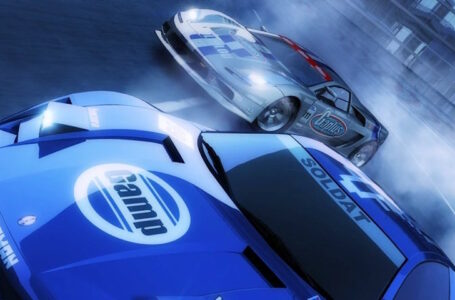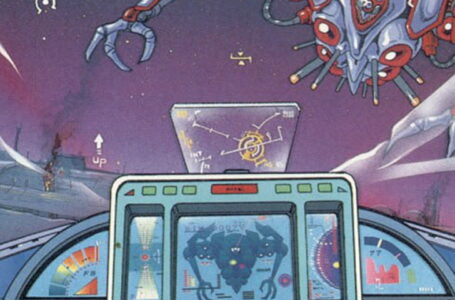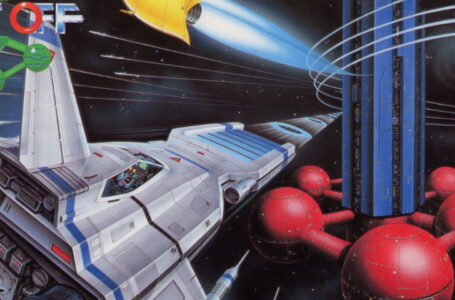2040: Ace Combat 3 – Electrosphere and the beginning of UGSF history
Did you know that a significant number of Namco’s games across a variety of platforms all occupy the same coherent narrative timeline? It’s true; said timeline is known as the UGSF (or United Government/Galaxy Space Force) Series, and Namco has an official site for it and everything. So I thought it might be fun to explore that entire timeline and see what we can discover — beginning with opening chapter Ace Combat 3: Electrosphere for PlayStation.
In narrative terms, Ace Combat 3: Electrosphere marks the first appearance of two organisations known as General Resource Limited and Neucom Incorporated, who would later control the . Throughout Ace Combat 3, these two companies are fairly consistently at one another’s throats, and you, as a pilot for the independent peacekeeping force UPEO, are tasked with giving both of them a good slap on the nose with an explosive-tipped rolled-up newspaper any time they start acting out.
Okay, it’s a bit more complicated than that — a series of decision points throughout Ace Combat 3 allows you to reach one of five different endings — but that is at least the initial setup for things. Unfolding in the near future, the game features a series of recognisable aircraft, but with a bit of futuristic “oomph” under the hood, allowing all of them to quite comfortably reach astonishingly high speeds with minimal effort, among other things.
One interesting thing about Ace Combat 3: Electrosphere is that despite it being such a narrative-heavy game, Namco made a disappointing decision when they localised it for English-speaking territories back in 2000: they cut pretty much all of the narrative content. And this was a significant part of the original 1999 Japanese release: coming on two CDs, the game featured extensive cutscenes and fully voiced dialogue sequences between missions, plus the aforementioned ability to branch off to one of five different endings.
The English version, meanwhile, was significantly cut back. Shipping on a single CD, featuring no branching narrative paths and only 36 out of the 52 missions of the original game, it’s still a decent experience from a gameplay perspective — but if you have the opportunity to experience the Japanese original, which is now possible thanks to a fan translation, you should absolutely take it.
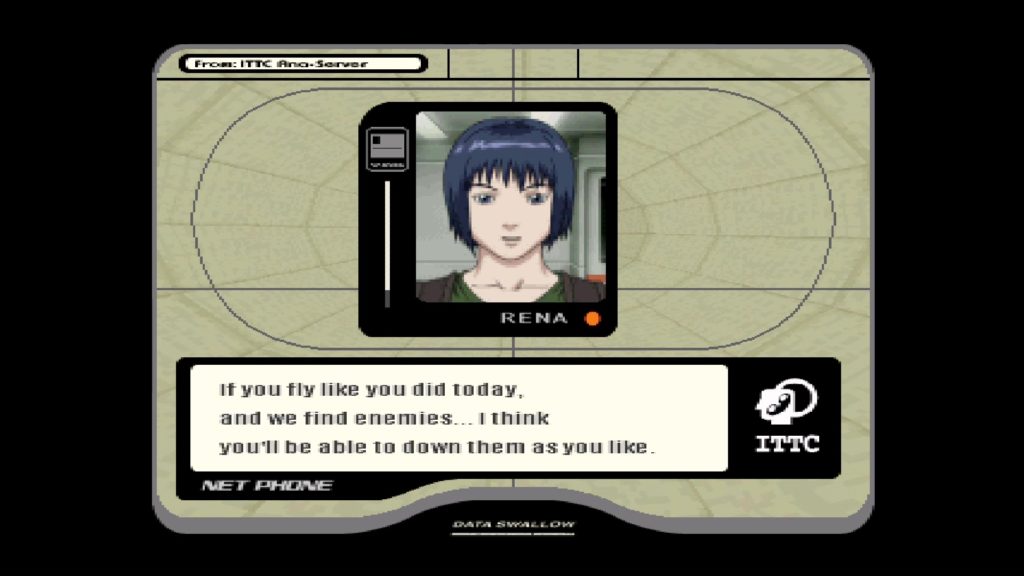
Namco has never given an official explanation as to why the international release of Ace Combat 3 was so significantly cut back from the original. Speaking with Hardcore Gaming 101 in 2012, translator Agness Kaku recalled that she worked on some translated demo scenes, but the localisation project was canned soon afterwards as Namco drastically cut the budget for the international release.
Some conjecture that the relatively poor commercial performance of Ace Combat 2 in comparison to its predecessor Air Combat (1 million copies compared to Air Combat’s 2.2 million) led Namco to believe that the extensive localisation required to provide the full Ace Combat 3 experience in English simply wasn’t financially viable. Indeed, ultimately the 1.1 million total worldwide sales of Ace Combat 3 ended up being closer to those of Ace Combat 2 than Air Combat, which could have cause Namco to look on the game as a commercial failure — and their budget-cutting measures to be the right decision.
Of course, one can argue that those worldwide sales may well have been a lot better if they’d brought the full experience over to English speakers. Indeed, Namco had been advertising the game’s complex storyline outside of Japan before taking the decision to strip back the localisation, leading to some backlash from series fans who were looking forward to the most narrative-heavy Ace Combat to date.
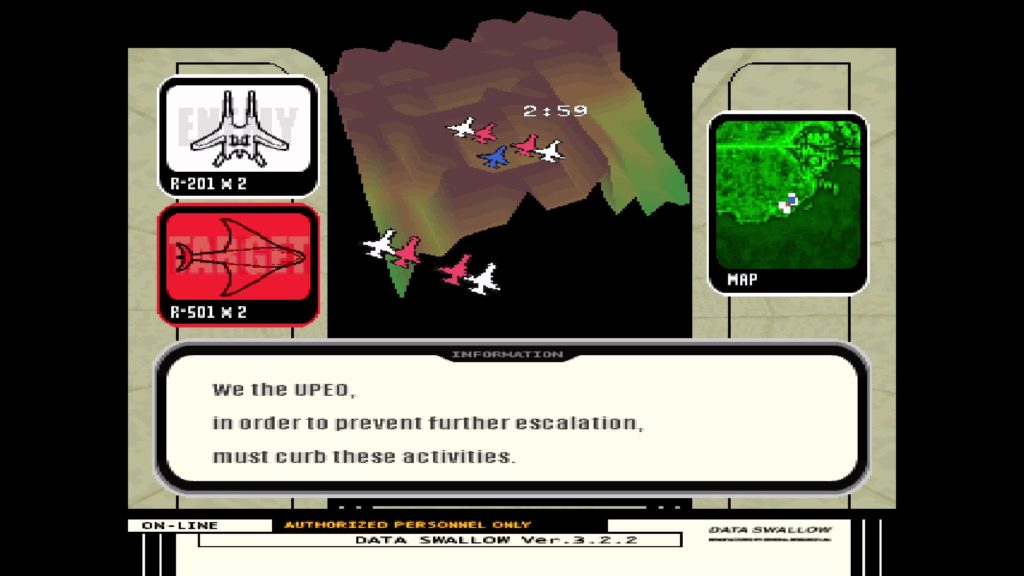
It’s also possible that Ace Combat 3’s strongly anime-inspired nature put Namco’s western divisions off somewhat; in the late ’90s and early 2000s, anime-style games were still seen as a somewhat risky prospect, since the medium was still quite new to non-Japanese audiences. And although it might not be apparent from the cover art to the game, Ace Combat 3 is extremely anime — it’s essentially a mecha anime with giant robots replaced by futuristic planes. And that’s why it’s great — and so disappointing we never got the chance to experience the full thing back in the day.
The game was still positively received from a critical perspective — but it’s still a bit of a sore point for fans, and many are still clamouring for a remake, though despite press and public alike badgering Namco since 2006, there has been no sign of this coming — and indeed in 2014, Kazutoki Kono of Project Aces noted that the size of the team working on the Ace Combat project was too small to support the massive localisation effort Ace Combat 3 required. So that fan translation is your best bet for now — even if it is incomplete in some non-critical places.
But on to the game itself — and for the purposes of today, assume we’re talking about the Japanese original.
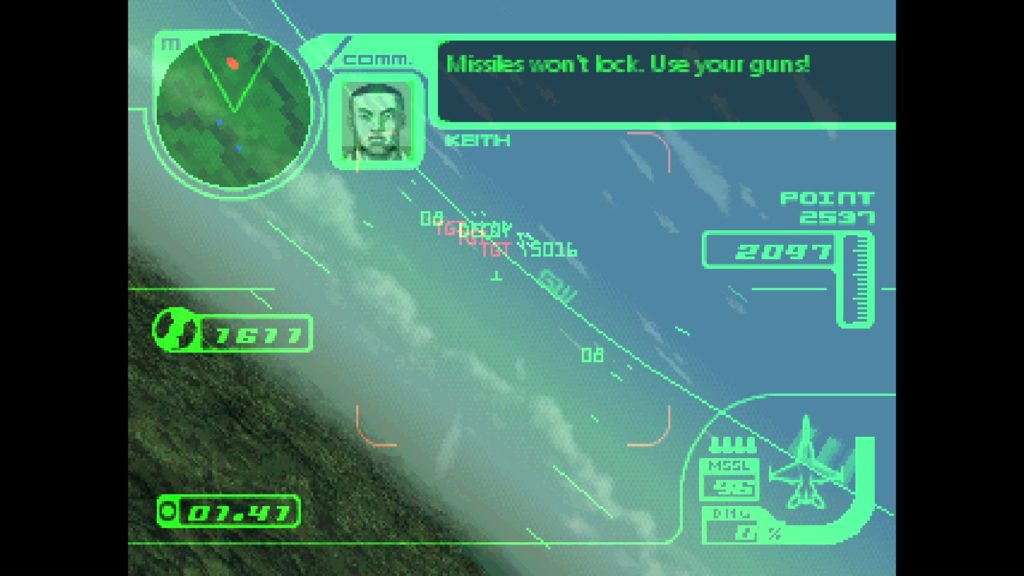
If you’ve played one of the more recent Ace Combat games, Ace Combat 3 will be immediately familiar, since fundamentally the series hasn’t changed all that much since its very first installment. Handling of the planes is very arcadey, allowing for some ridiculously implausible manoeuvres to be performed with ease, and the absurdly enormous loadout of missiles each one carries allows for dramatic volleys of warheads to be unloaded on each and every target you come across.
Since it’s set in the near future, Ace Combat 3 eschews real aircraft in favour of fictional, futuristic ones. Some of these are speculative upgrades to real-world designs such as the F-16 Fighting Falcon, F/A-18 Hornet and F-22 Raptor, but others are completely fictional — and all of them are capable of comfortably breaking the sound barrier and reaching speeds in excess of 1,000 knots without breaking a sweat.
The full-screen head-up display while flying presents a futuristic take on real-life head-up displays, presenting critical information in an easy to parse, immersive manner that doesn’t interfere with your view of what’s actually going on outside. Targets are tracked even when they’re outside your field of vision, and when following a moving target, an indicator appears showing which direction they’re flying relative to you, allowing you to easily determine whether you’re likely to hit them if you were to fire now.

Missions are enjoyably varied, encompassing air-to-air interception missions, escort missions, air-to-ground assaults and, of course, the series’ obligatory canyon runs. For the Ace Combat newbie, missions like this involve flying a plane that isn’t really designed to fit into a tight space into rather perilous environments, usually while chasing something down. In this case, you’re following a stealth fighter down a canyon in order to discover a weapons research facility; popping up above the canyon edge will cause you to get caught by radar, so you need to stay low and stay fast to keep your target in sight.
The branching points in the narrative ultimately determine which of the several different factions in the game you end up aligning yourself with, and often have a significant impact on whether certain characters live or die. There are plenty of opportunities to betray and be betrayed, and those five different endings — each of which have a completely different series of missions leading up to them — provide plenty of replay value to see how the story might turn out differently.
If there’s one criticism to be levelled at Ace Combat 3, it’s that these decision points don’t always make it obvious exactly how you’re supposed to make a decision. In Ace Combat 5, by comparison, the few branches in the narrative are accomplished by your responses to simple “YES/NO” questions — whereas here, you have to actually take action (or, indeed, refuse to take action) in order to make a specific decision.
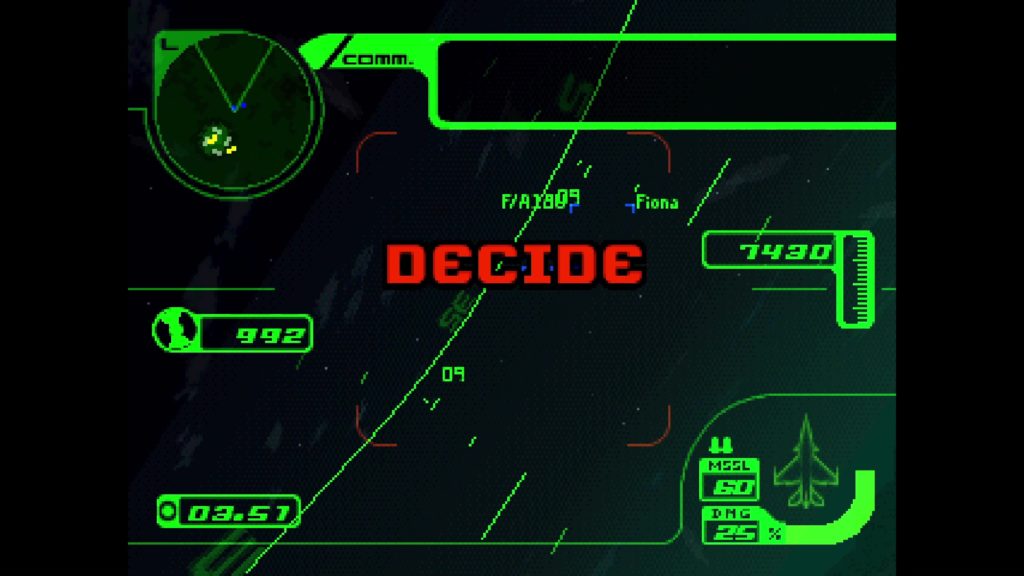
One good example comes in a mission where you’re supposed to be escorting a diplomat to a secret mission, yet partway through you’re asked to betray him and shoot him down. If you do nothing, your wingman ends up shooting him down anyway — so the way you “refuse” this mission is simply to shoot down a seemingly unrelated aircraft that is flying nearby instead. This isn’t at all obvious at first — though at least with how you can save your game in one of several slots between missions, and how relatively brief most missions are, it’s a simple matter to try again.
This little niggle aside, Ace Combat 3 is an excellent game that holds up very well today despite its dated visuals. Its futuristic menus and story sequences are delivered with the same amount of style and panache that we saw in Ridge Racer Type 4 from a couple of years prior, and the in-game presentation is as immaculate as you’ll get for an original PlayStation title, with excellent dramatic music and well-delivered Japanese language voice acting.
As the narrative starting point for the entire UGSF series — the two rival companies who form the core of the story end up controlling the UGSF from the shadows for a good millennium following the events of the game — Ace Combat 3 is worth a play from a historical perspective. And, fortunately, it’s still a highly enjoyable game today too; while later Ace Combat games may have refined the formula and tightened up the controls a fair bit in particular, it’s not hard to see why this installment has always been a fan favourite.
Join The Discussion
Rice Digital Discord
Rice Digital Twitter
Rice Digital Facebook
Or write us a letter for the Rice Digital Friday Letters Page by clicking here!
Disclosure: Some links in this article may be affiliate links, which means we may earn a small commission if you make a purchase after clicking on them. This is at no additional cost to you and helps support Rice Digital!
- Letter from the Editor: passing the torch - June 30, 2023
- Super Woden GP 2 is looking promising - June 30, 2023
- Inti Creates is making a 32 bit-style Love Live action platformer - June 26, 2023





